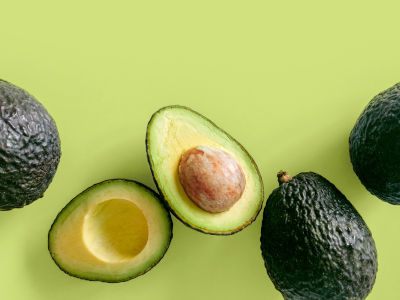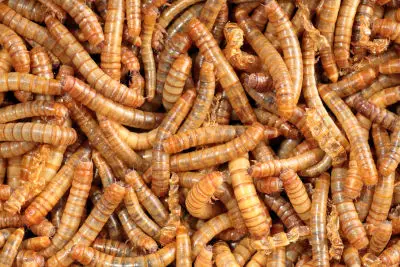What Can I Use for Iguana Bedding?
Are you keen to learn what substrate you can use for your Iguana? Well, you are in the right place. Let me explain why it is important to not just choose any old substrate for your pet.
What can I use for iguana bedding? There are two main types of bedding particle based, such as sand and non-particle based, such as substrate liner (Click to see reviews on Amazon). The best and safest, in my opinion, is the non-particle based.
| Are these foods dangerous for your Beardie? | |
| Avacado? Click here to learn, from this guide, if this food is dangerous |  |
| Superworms? Click here to learn, from this guide, if this food is dangerous |  |
Now you know what is available, let me explain why I don’t recommend particle based substrate for your Iguana, what can happen if it eats this substrate, some great substrate options that are easy to maintain and are safer than particle based offerings, and more.
What are the dangers of losing using loose substrate?
Loose substrate or particle-based substrate as it is sometimes called looks great in an enclosure. And in most cases, it gives a good look and resembles a lizards natural environment.
However, it does have problems. Let me explain.
Small Particles Can Get Lodged
It is based on small pieces of particles that can easily be eaten by your lizard by mistake. The problem is, if this happens, it can cause some major health issues, in particular, impaction.
What is impaction?
Impaction is where some loose substrate is consumed, this could easily be done by an Iguana. For example, they may be using their tongue to eat an insect or something and inadvertently pick up a particle of the substrate.
They also use their tongue for a number of different activities, as you can imagine, any of them can inadvertently result in this loose substrate getting into their system.
Once the substrate is in their system there is no way for it to digest it and it causes a blockage (Impaction). Depending on how serious it could lead to different levels of health problems. There are two major types of impaction that I will discuss now:
- Chronic impaction
- Acute impaction
Acute impaction
This one is more obvious. The symptoms are quite simple to detect. You can expect your lizard to become constipated. Also, in extreme cases, it can also lead to them passing away.
Effectively the food particles from the substrate get lodged into their system not allowing any other food that they eat to get digested properly.
In time the food will start to enter their bloodstream and could eventually lead to them dying. If it is caught in the early stages it can be cured. But, the key thing is making sure that you pick it up early enough.
Chronic impaction
This form is a bit more subtle and is easy to go unnoticed. This is because there are no obvious symptoms. You may observe your lizard continuing to defecate without any noticeable problems.
You may also notice that they are eating as normal, without any noticeable problems. However, internally there is a substantial problem happening.
In this case, the food is not being digested correctly. On the surface, it looks like they’re eating, but in fact, the food is not being digested. They are basically slowly starving their system of valuable nutrients required to survive.
However, if you catch this at an early enough stage then your vet should be able to help you get around this problem. But, the issue is ever knowing what stage it’s at and identifying the problem in the first place.
These are the reasons why most lizard keepers try to avoid particle base substrate, especially for Iguanas. However, it is still possible to use loose substrate successfully. And in fact, many other lizard keepers have done this.
If you do want to pursue using loose substrate you need to make sure that the substrate is digestible. This is important because in the event they consume the substrate, then it is possible to go through their system and not cause the blockage and lead to impaction.
Non-particle based substrate
This type of substrate is definitely not as good looking as the particle-based. However, it is a lot safer. The reason being, it does not have any small particles. In fact, it is pretty much solid and doesn’t have any particles at all.
The advantages of this, in addition to not having small particles, is the fact that it is easily found around the house, economical to use (e,g, kitchen towels or newspaper). And finally, it is quite easy to maintain and keep clean.
There are slightly more expensive options such as ceramic tiles but this is at your discretion.
Best Substrate for Iguanas:
01. Vinyl Tiles
Pros:
- Safe (No loose particles)
- Easy to clean
- Available in varies colors
Cons:
- Needs to be fitted (may need some effort/skill to get it laid correctly)
Vinyl Tiles (Click for reviews on Amazon) is a great option. They are easy to keep clean, maintain. The main benefit is the fact that they do not have any loose particles, meaning they are a lot more safe option.
02. Zilla Reptile Substrate Liner
Pros:
- Easy to fit
- Low maintenance
- Easy to clean
- No Loose Particles
Cons:
- Will need to be cut (but not a big issue)
The Zilla Substrate Liner (Click for reviews on Amazon) is a very simple substrate ideal for Iguannas. It does not have any loose particles to keep your lizard safe from impaction.
It is easy to clean and maintain. The only little thing is, you will need to cut it to size before use, but that is quite a minor thing in my opinion.
03. Artificial Grass
Pros:
- Looks great
- Toxin Free
- Washable
- No loose particles.
Cons:
- Will need to be sized up and cut to shape.
Artificial Grass (Click for reviews on Amazon) Is a great substrate. It looks great and more importantly it looks realistic. It is safe, without any loose particles.
On top of that, it is toxin-free. Another great benefit is that it is washable, meaning that it is easy to clean and maintain. The only minor annoyance is cutting and shaping it to fit your enclosure, but that’s it
Related questions:
Q: Do Iguanas need heat lamps at night?
Yes, they do. In fact, they need heat in the night, however, they shouldn’t have the lights on. Let me explain.
Iguanas need to have the lights off in the night hours so that it does not affect their sleep cycle. If you do not do this, they will not rest properly. And will become aggravated and could lead to health issues.
You may be thinking to yourself, if that’s the case how can you heat the enclosure if there is no light?
Good question, to do this, you need to use a ceramic heat emitter (CHE) (Click to see the price on Amazon):
This CHE gives off heat without requiring light. They easily screw into an incandescent light fixture.
One final tip on this note you need to make sure during the Night-Time. That the temperature does not drop below 75 degrees Fahrenheit.
Q: How long until an iguana reaches a mature size?
The reality is there are a number of different iguana species. So, it is hard to say an exact age across all. However, on average you can expect them to hit maturity at around 3 years old.
Full-size for an iguana has quite a big range depending on the species. For example, the Spiny-tailed iguana, one of the small Iguana species (click for 7 of the smallest), will be approximately 4.9 inches in length. As opposed to a green iguana which could be as long as 7 feet so there is quite a big broad range.



